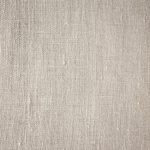Imagine a world where your clothes not only look good but also do good for the planet. In the domain of sustainable fashion, knowing the difference between biodegradable and compostable fabrics is vital. Biodegradable fabrics break down naturally over time, thanks to microbial activity, while compostable fabrics require specific conditions to turn into nutrient-rich compost. Choosing the right fabric depends on how quickly you want it to decompose and what end-use goals you have. As you explore these options, you'll uncover how each type plays an essential role in promoting eco-conscious practices in the textile industry.
Table of Contents
Key Takeaways
- Biodegradable fabrics naturally decompose over time, reducing landfill waste.
- Compostable fabrics break down into nutrient-rich compost under specific conditions.
- Organic cotton, hemp, and bamboo are popular biodegradable and compostable fabrics.
- Compostable fabrics require controlled environments for faster, non-toxic decomposition.
- Choosing these fabrics supports environmental sustainability and reduces carbon footprint.
Understanding Eco-Friendly Fabrics
When it comes to eco-friendly fabrics, understanding the difference between biodegradable and compostable materials is essential. In sustainable fashion, these terms often come up, and knowing their nuances can help you make more informed choices.
Eco-conscious materials aren't just about reducing waste; they're about creating a positive environmental impact from production to disposal.
First, let's delve into what makes a fabric eco-friendly. Sustainable fashion prioritizes materials sourced responsibly, ensuring minimal harm to the environment. Fabrics like organic cotton, hemp, and Tencel are prime examples. These materials use less water, fewer chemicals, and promote biodiversity. Choosing such fabrics means you're supporting a system that values the planet's resources.
Eco-conscious materials also aim to minimize your carbon footprint. They're designed to break down naturally, unlike synthetic fibers that can linger in landfills for centuries. By opting for biodegradable and compostable options, you're ensuring that your fashion choices won't contribute to long-term environmental damage.
Biodegradable Vs. Compostable
When you're comparing biodegradable and compostable fabrics, it's important to understand how their breakdown processes differ.
Biodegradable fabrics decompose naturally over time, but compostable fabrics require specific conditions to turn into nutrient-rich compost.
Knowing these distinctions helps you assess their environmental impacts more accurately.
Breakdown Process Differences
Understanding the breakdown process differences between biodegradable and compostable fabrics is essential for making environmentally conscious choices. When you consider these fabrics, note that both rely on microbial activity, but their decomposition rates and end results vary significantly.
Biodegradable Fabrics:
- These break down through natural processes involving microorganisms.
- Decomposition rates can vary widely depending on environmental conditions.
- There's no guarantee of soil nutrient enrichment once the fabric has decomposed.
Compostable Fabrics:
- These are designed to break down into non-toxic components, primarily through controlled composting conditions.
- They decompose at a faster, more consistent rate.
- Breakdown results in soil nutrient enrichment, offering substantial environmental benefits.
| Breakdown Factor | Biodegradable Fabrics | Compostable Fabrics |
|---|---|---|
| Microbial Activity | Relies on natural microbial action | Enhanced microbial activity in compost |
| Decomposition Rates | Variable and slower | Faster and more consistent |
| Soil Nutrient Enrichment | Not guaranteed | Assures nutrient-rich compost |
Choosing between biodegradable and compostable fabrics often hinges on how quickly you need the material to decompose and whether you aim to enrich the soil. By understanding these breakdown differences, you can make more informed and sustainable fabric choices.
Environmental Impact Analysis
In evaluating the environmental impact of biodegradable versus compostable fabrics, it's important to assess how each type impacts ecosystems and waste management practices. By understanding these differences, you can make informed choices that align with environmental sustainability.
Biodegradable fabrics break down naturally over time, but they can still leave a noteworthy carbon footprint, especially if not disposed of correctly. These materials often decompose in landfills, releasing methane, a potent greenhouse gas.
On the other hand, compostable fabrics require specific conditions to break down into non-toxic components, usually in industrial composting facilities. When managed correctly, compostable fabrics contribute to waste reduction by turning into valuable compost, enhancing soil health.
Recycling options for biodegradable fabrics are limited compared to compostable fabrics, which can sometimes be integrated into circular economies. However, both options present challenges and opportunities. Biodegradable fabrics may offer convenience, but without proper disposal, their environmental benefits diminish.
Compostable fabrics, while offering more controlled waste management outcomes, require robust infrastructure to realize their benefits. Ultimately, your choice should hinge on the fabric's end-of-life scenario and the available waste management systems. Opting for compostable fabrics where facilities exist can notably advance environmental sustainability and reduce overall waste.
Top Biodegradable Fabrics
When considering top biodegradable fabrics, you'll find organic cotton, hemp, and bamboo as front-runners.
Organic cotton offers numerous benefits, including reduced environmental impact.
Hemp fabric stands out for its durability, while bamboo textiles are known for their softness and sustainability.
Organic Cotton Benefits
Organic cotton offers numerous benefits, making it a top choice among biodegradable fabrics. When you choose organic cotton, you're supporting farming practices that enhance soil health. These methods avoid synthetic pesticides and fertilizers, allowing the soil to maintain its natural balance and fertility. As a result, organic cotton farming promotes biodiversity, helping the ecosystem thrive.
Another significant advantage is water conservation. Organic cotton requires less irrigation compared to conventional cotton, as it often relies on rain-fed farming techniques. This reduction in water usage is critical, especially in regions where water scarcity is a pressing issue. By opting for organic cotton, you're contributing to a more sustainable and responsible use of this essential resource.
Moreover, organic cotton is free from harmful chemicals that can linger in the fabric. This means it's safer for your skin and less likely to cause allergic reactions. The softness and breathability of organic cotton also make it an excellent choice for comfort.
Hemp Fabric Characteristics
While organic cotton boasts numerous benefits, hemp fabric stands out as another top biodegradable option with its own unique characteristics. You'll find that hemp fabric durability is unparalleled. This robust material can withstand repeated wear and washing, making it an excellent choice for items like clothing, bags, and home textiles. Its strength doesn't compromise comfort; rather, it enhances the longevity of your garments, ensuring they remain in great shape for years.
Hemp fabric breathability is another exceptional trait. This natural fiber allows air to circulate freely, keeping you cool in the summer and warm in the winter. It's perfect for activewear, casual outfits, and even bedding. You won't have to worry about discomfort or excessive sweating, as hemp efficiently wicks away moisture and keeps you feeling fresh.
Additionally, hemp fabric is naturally resistant to mold, mildew, and harmful UV rays. This makes it an ideal choice for outdoor gear and patio furniture. Its eco-friendly cultivation process, which requires fewer pesticides and less water than other crops, further solidifies hemp's standing as a sustainable and biodegradable fabric.
Embrace hemp, and you'll enjoy a blend of durability, breathability, and environmental responsibility.
Bamboo Textile Advantages
Bamboo textiles offer a fantastic blend of softness and strength, making them a top choice for those seeking biodegradable fabrics. They're not only luxurious but also earth-friendly, giving you the best of both worlds.
Here's why bamboo textiles should be on your radar:
- Sustainable Manufacturing: Bamboo grows rapidly and requires minimal resources, making its cultivation highly sustainable. Its swift growth cycle and low water needs make it a prime candidate for environmentally conscious production.
- Eco-Friendly Properties: Bamboo fibers are naturally antimicrobial and hypoallergenic, reducing the need for chemical treatments. This translates to fewer pollutants entering the environment during the manufacturing process.
- Breathability and Comfort: Bamboo fabric is incredibly breathable and moisture-wicking, keeping you cool and comfortable. It's perfect for activewear or everyday clothing, ensuring you stay fresh and dry.
- Durability and Longevity: Despite its softness, bamboo textile is remarkably durable. It holds up well over time, ensuring you get the most out of your garments without compromising on quality.
Embrace bamboo textiles for their unique combination of luxury, sustainability, and eco-friendly properties. By choosing bamboo, you're making a conscious decision towards a more sustainable future.
Best Compostable Fabrics
When it comes to selecting the best compostable fabrics, you'll find several options that not only break down efficiently but also offer excellent durability and comfort. As you aim for sustainable options and eco-conscious choices, consider the following fabrics that stand out in both performance and environmental impact.
| Fabric | Key Benefits |
|---|---|
| Organic Cotton | Soft, breathable, and chemical-free |
| Hemp | Strong, durable, and moisture-wicking |
| Linen | Lightweight, biodegradable, and cool |
Organic Cotton: This fabric is a top contender due to its softness and breathability. It's grown without harmful pesticides and synthetic fertilizers, making it a favorite among eco-conscious individuals.
Hemp: Known for its strength and durability, hemp fabric is naturally resistant to mold and ultraviolet light. It requires minimal water and no pesticides, making it an excellent sustainable option.
Linen: Derived from the flax plant, linen is fully biodegradable and compostable. It's celebrated for its lightweight and cooling properties, ideal for warm climates.
Opting for these fabrics ensures you're making choices that align with a sustainable lifestyle. Each provides a unique blend of benefits, allowing you to enjoy high-quality textiles while reducing your environmental footprint.
Benefits of Sustainable Fabrics
Choosing sustainable fabrics not only benefits the environment but also enhances your well-being and comfort. By opting for sustainable fashion, you're making a conscious choice to support eco-friendly practices and reduce your carbon footprint. Here are some compelling benefits that eco-conscious consumers can enjoy:
- Environmental Impact: Sustainable fabrics are made from renewable resources and are biodegradable. Unlike conventional fabrics, they don't contribute to landfills or toxic chemical pollution.
- Health Benefits: Many sustainable fabrics, such as organic cotton or bamboo, are free from harmful chemicals and dyes. This means fewer allergens and irritants, promoting healthier skin and overall well-being.
- Durability: Sustainable fabrics are often more durable and long-lasting compared to their conventional counterparts. This means your clothing will withstand wear and tear, reducing the need for frequent replacements and contributing to a more sustainable wardrobe.
- Ethical Production: Choosing sustainable fashion often supports ethical labor practices. Many eco-friendly brands make sure of fair wages and safe working conditions for their workers, aligning your wardrobe with your values.
Tips for Choosing Eco-Friendly Fabrics
Exploring the world of sustainable fashion becomes easier when you know what to look for in eco-friendly fabrics. Start by checking for fabric certifications like GOTS (Global Organic Textile Standard) or OEKO-TEX, which confirm the material meets specific environmental and social criteria. These certifications are your assurance that the fabric has been produced without harmful chemicals and under fair labor conditions.
Next, prioritize natural fibers such as organic cotton, linen, or hemp. These materials aren't only biodegradable but also require fewer resources to produce. Be cautious of synthetic blends, even if they claim to be eco-friendly; they often don't break down and can release microplastics into the environment.
When shopping, consider the fabric's lifecycle. Look for items labeled as compostable, which means they can return to the earth without leaving a toxic residue. Brands committed to sustainable fashion will often provide detailed information about their materials and production processes.
Lastly, buy from brands with transparent supply chains and ethical practices. Choosing eco-friendly fabrics isn't just about the materials; it's about supporting a system that values the planet and its people. Armed with this knowledge, you'll make more informed and sustainable fashion choices.
Frequently Asked Questions
How Long Does It Take for Biodegradable Fabrics to Decompose?
Have you ever wondered how long biodegradable fabrics take to decompose? Factors influencing decomposition include material type and environmental conditions. Typically, it takes weeks to months, greatly reducing environmental impact compared to traditional fabrics.
Can Compostable Fabrics Be Dyed With Natural Dyes?
Yes, you can dye compostable fabrics with natural dyes. The natural dye benefits include reduced environmental impact and enhanced sustainable fashion. By mastering this technique, you contribute to eco-friendly fashion without compromising on style or quality.
Are Biodegradable and Compostable Fabrics Safe for People With Allergies?
Have you ever wondered if biodegradable and compostable fabrics are safe for people with allergies? Allergy considerations are crucial, but these eco-friendly options often offer health benefits. Explore fabric alternatives to guarantee they meet your specific needs.
What Are the Best Practices for Disposing of Compostable Fabrics?
You should follow the composting process for disposing of compostable fabrics. This method maximizes the benefits and guarantees proper degradation. Consider biodegradable fabric alternatives for easier composting and to enhance environmental sustainability.
How Do Biodegradable Fabrics Compare in Cost to Traditional Fabrics?
When you compare the cost of biodegradable fabrics to traditional fabrics, you'll find biodegradable options can be pricier. However, the environmental impact and sustainable production methods often justify the higher cost, driven by increasing market demand.
- Creating Large-Scale Art Installations With Scrim Fabric - June 26, 2025
- Scrim Fabric in Upholstery: Understanding Its Use as a Backing Material - June 26, 2025
- Solving Echo and Reverb: A Complete Guide to Acoustic Scrim Panels - June 26, 2025






